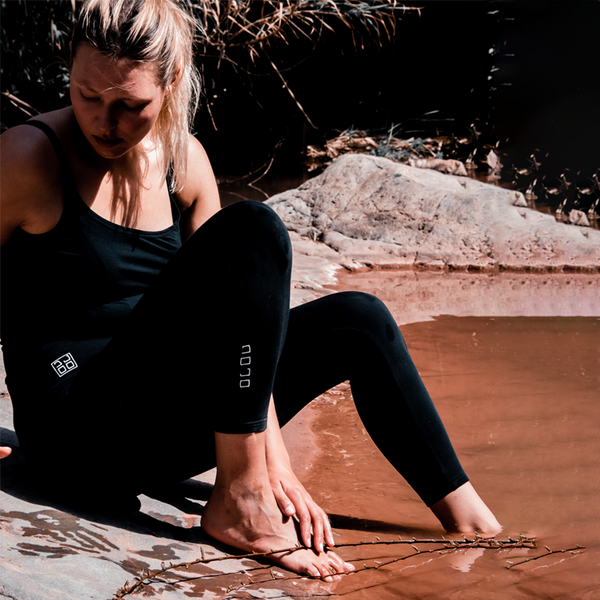Your Cart is Empty
FREE SHIPPING FLASH DEAL! Use code "SUPERNATURAL"
FREE SHIPPING FLASH DEAL! Use code "SUPERNATURAL"

3 min read
Have you ever been mid-squat at the gym or mid-pose at the yoga studio, only to catch a glimpse of something you weren't expecting?
It’s not really the look that you or other women are going for when you're trying to focus your mind-muscle connection at the squat-rack, or harness your zen in downward-dog.
Whilst wardrobe malfunctions might be amusing on occasion, they’re certainly not when you want to feel confident and relaxed in a work-out or yoga session.
That’s why squatproof leggings are an essential item in your activewear collection. These leggings are specifically designed to be opaque, even during deep bends and stretches, allowing you to focus on crushing your goals.
In order to be considered ‘'squatproof’' leggings need to excel in three key areas - opacity, stretch, and ideally breathability.
Let's quickly look at the common materials used to make gym and yoga leggings, and there pros and cons with regards to standing up to the squat:
But keep in mind that it might not be as stretchy as some other options.
The magic truly happens when these materials join forces. A blend of nylon and spandex, for example, combines strength with stretch for excellent performance.
Look for leggings with a higher percentage of synthetic fibres (nylon, polyester) for better squatproofness. Cotton can be included in blends for comfort, but be mindful of the overall percentage and prioritise synthetics for opacity.

If you don’t want to wear toxic synthetic leggings,DOJO’s sustainable cotton leggings featuring unique 4-way stretch are totally squatproof.
Our uber soft combed and mineral-treated cotton is blended with just 5% spandex.To create totally opaque non-seethorough leggings which retain their second-skin like fit and dense colour for countless uses and washes.
To be totally safe in the knowledge your leggings will meet the squatting standard, you may want to consider a few additional factors. Here's how to go beyond material type and content when picking squatproof leggings:
Choosing the perfect material also depends on your workout style:
Choosing the right material is essential for squatproof leggings. You might have to experiment with different blends to find the perfect balance of comfort, performance, and opacity.
Generally speaking, with cheaper products, the thicker the leggings the less see-through they are. Remember however that this will make them trap body heat much more effectively and is likely to cause sweating and be less comfortable. Which is simply not viable for a gym or yoga session.
However, higher-end brands that use blends of different materials can achieve a fully squatproof fabric that is also well-fitting and comfortable.
In particular,DOJO leggings which are made from award-winning organically mineral-treated cotton with just 5% spandex added are one of the best options available.
If you can, ask the brand about the design of their garments to see if they can explain how/why their leggings are squatpoof. Also look online for product reviews to see what buyers are saying about them.
Ultimately, prioritise comfort and confidence in your leggings so you can focus on achieving your fitness goals!
Comments will be approved before showing up.
5 min read
There's a growing body of research suggesting that exposure to the chemicals used in polyester production might have implications for human fertility. This post will explore the potential connections between polyester and infertility, shedding light on both the chemical exposure it causes and the biological mechanisms that may be affected.

5 min read
Yoga, an ancient practice renowned for its physical and mental benefits, has evolved over time to incorporate various elements and styles.
A recent intriguing addition is kitten yoga - the feline equivalent of puppy yoga. This unique combination of yoga poses and catty companionship offers a delightful and therapeutic experience.

3 min read
The idea of stretching alongside furry friends sounds undeniably charming, and classes have been popping up all over the UK.
At DOJO we love dogs as much as (probably more) the next eco and health conscious sustainable activewear brand.
But before you jump on the mat with a cuddle puddle of puppies, it's important to consider responsible dog interaction and ensure a positive experience for both humans and their canine companions.

Use code SUPERNATURAL at checkout